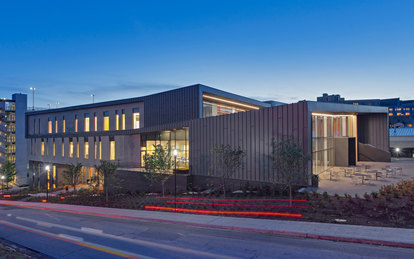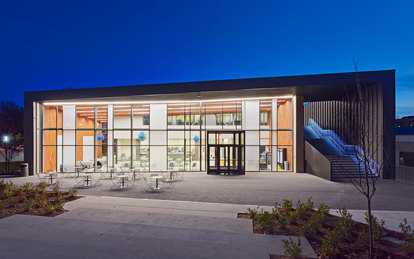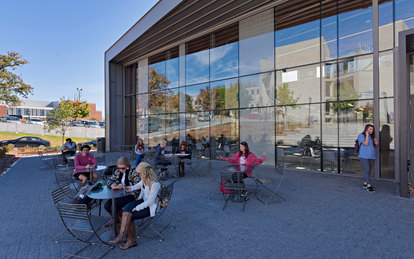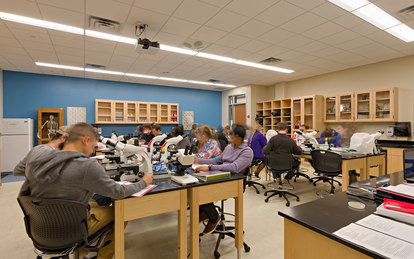University of Arkansas - Champions Hall
A classroom building at the University of Arkansas, enhances the student experience with a crafted collection of learning spaces combined to form an active campus hub. This highly sought-after learning and collaboration venue provides choice inside and out, extending the student learning experience beyond its walls.
Client
University of Arkansas
Location
Fayetteville, Arkansas
Markets/Services
Active Learning, Architecture, Classrooms, Higher Education, Interiors, Lab Planning, Landscape Architecture, LEED, STEM (Science, Technology, Engineering, Math), Sustainable Design
Size
67,000 SF
Featured Awards
LEED Gold
Combining innovative classroom, class-lab and informal learning environments has proven to increase learning retention and student persistence. Designing to optimize this successful mix of program was the challenge for the University of Arkansas’s Provost-controlled classroom building, Champions Hall.
Sited at an active intersection on campus and with proximity to the University’s historic core, Champions Hall needs to engage the campus on multiple fronts. The challenging site, about the size of a football field, has a drop of 45 feet from one corner to the other. Our team solved this topographical challenge with a clever design that provides exterior access on all four levels of the building. The graceful structure strategically steps down the site, revealing all four levels of the building folded into the hillside. Inside, light monitors draw daylight deep into below grade spaces. A double-height glass portal announces the main entry from Dickson Street, a busy campus street, and serves as a living room and social hub for this area of campus.
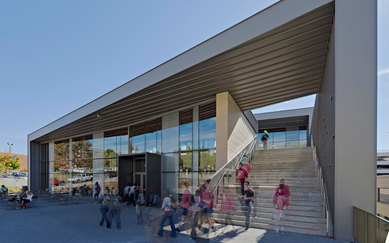
The project is primarily an undergraduate classroom and class-lab building that combines two core curriculum, Math and Science. As the building’s hub, the Math Resource and Testing Center (MRTC) connects students in the earliest phases of their education to their peers and faculty. Inside the MRTC, the student-controlled environment allows students to engage in learning at their own pace with faculty support.
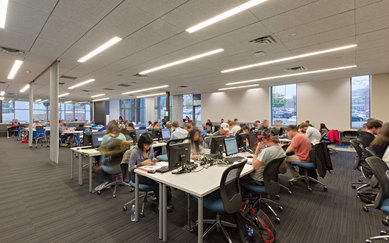
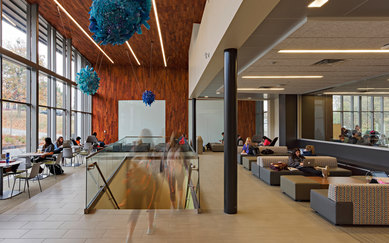
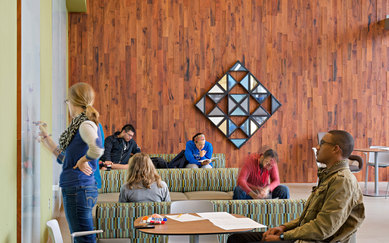
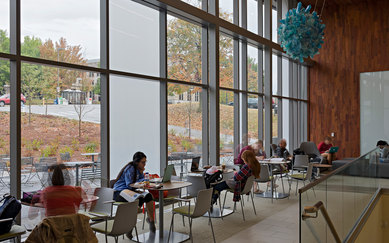
The design’s distilled material palette of brick, glass and standing-seam metal alludes to the adjacent industrial buildings while also tying into the nearby historical academic core. A mix of collaborative spaces allow for quiet study or simply hanging out before class and inviting exterior plazas and terraces allow learning to flow outside.
By connecting students and driving student success, Champions Hall has become a hot spot on campus with its engaging and welcoming learning environments.
